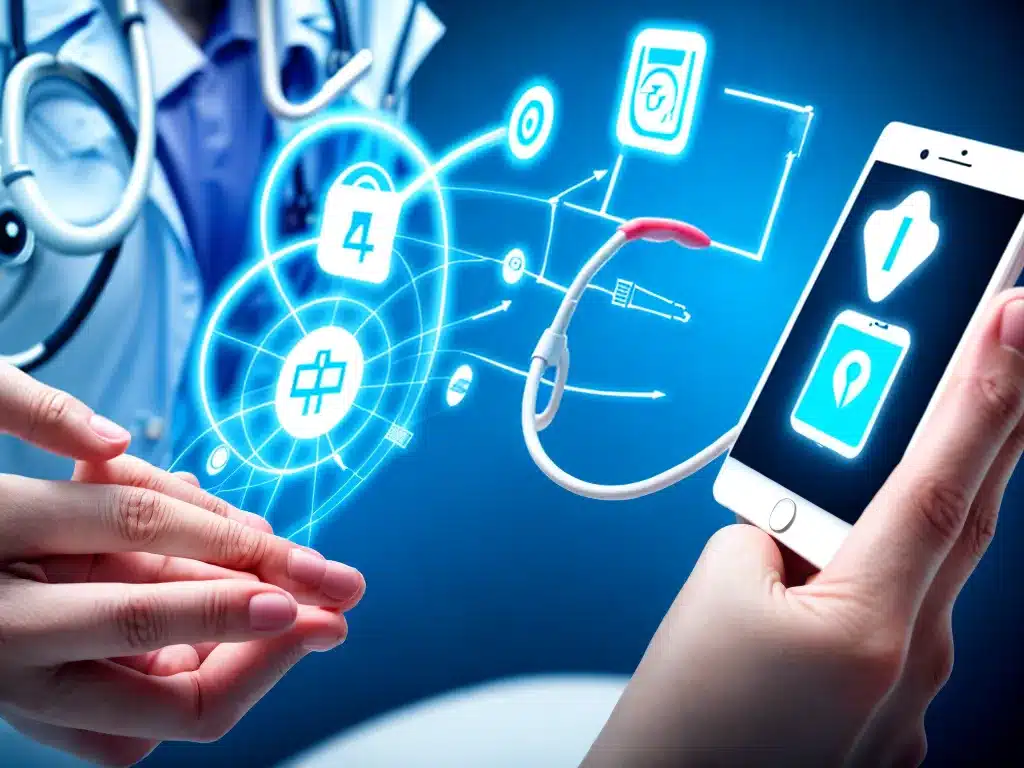
IoT in Healthcare: The Promise of Connected Medical Devices
The Internet of Things (IoT) is transforming healthcare through connected medical devices and wearables. As a patient and potential user of such technologies, I am excited by the promise of IoT to improve health outcomes, lower costs, and empower patients. Here is an in-depth look at how IoT is changing healthcare.
Enhancing Patient Monitoring and Care
IoT-enabled medical devices allow continuous, real-time monitoring of patient health data. This allows doctors to provide better preventative care and rapid response to any changes or anomalies. Some examples include:
- Smart cardiac monitors that track heart activity 24/7 and connect to apps that share the data with doctors. This enables early diagnosis of conditions like arrhythmia.
- Wearable sensors that track vital signs like blood pressure, oxygen saturation, respiration rate, etc. These can alert nurses to any sudden changes in fragile patients.
- Ingestible sensors that monitor internal processes like gastrointestinal activity. Doctors get insights into conditions like ulcers without invasive procedures.
The key benefit is the transition from episodic to continuous care. Doctors have fuller visibility into a patient’s health instead of periodic check-ups. This early detection and prevention has the potential to save many lives.
Improving Chronic Disease Management
IoT also holds great potential for managing chronic illnesses like diabetes and hypertension. Connected devices enable:
- Real-time monitoring of blood glucose, blood pressure, etc. Patients get alerted to abnormalities sooner.
- Medication adherence tracking through smart medicine dispensers. This ensures patients follow prescription regimens.
- Automated data collection removes manual tracking and human errors in logging health data.
- Data-driven, personalized care plans tailored to each patient’s condition through analytics.
Such real-time data and insights can empower both patients and doctors to better control chronic diseases. Patients also feel more assured knowing their health is continuously monitored.
Reducing Hospital Readmissions
Hospital readmissions due to post-discharge complications are a huge source of preventable healthcare costs. IoT devices can cut down readmissions by:
- Monitoring discharged patients at home for any worrisome symptoms.
- Providing remote access to specialists who can intervene early.
- Tracking medication compliance and daily health indicators.
- Automating follow-ups and scheduling of home appointments as needed.
Fewer readmissions improve outcomes and lower costs – a win-win for patients and hospitals.
Enabling Independent Living for Elderly
IoT devices also make aging in place easier and safer. Some examples include:
- Fall detection sensors that alert caregivers if a vulnerable senior has fallen. This allows rapid assistance.
- Safety and security monitors that keep track of daily activities and alert caregivers or doctors if anything seems amiss.
- Location trackers for patients with dementia in case they wander.
- Medication dispensers that improve prescription adherence.
Such technologies allow the elderly to retain independence and remain at home while getting needed care and oversight. Their quality of life is greatly improved.
Challenges in Healthcare IoT Adoption
While promising, healthcare IoT faces barriers to mainstream adoption such as:
- Privacy and security concerns around collecting and sharing sensitive patient data.
- Interoperability issues with proprietary data formats and APIs. Seamless integration is difficult.
- Regulatory uncertainty around connected medical devices and wearables.
- Clinician buy-in is needed to learn and integrate new technologies into workflows.
Addressing these challenges will be key as IoT aims to transition from promising pilot projects to widespread deployment.
The Road Ahead
IoT has huge potential to transform our model of care delivery from reactive to preventative. As patients, we can look forward to proactive care enabled by continuous monitoring and smart analytics. Devices like the Apple Watch and FitBit are just early steps toward this connected future. While adoption barriers remain, the value of IoT in saving lives and improving care outcomes is undeniable. I am excited to see how this technology can give patients more control over health as well as enrich the care experience.












